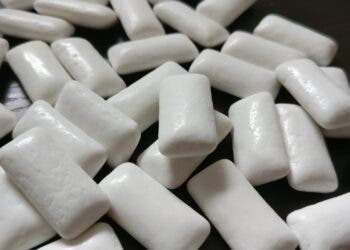
If you chew betel nuts (also called areca nuts) with slaked lime and betel leaves, you get a mixture that boosts energy, euphoria, and relaxation. We don’t know who figured this out, but apparently, they figured it out thousands of years ago.
Archaeologists at a site in Bronze Age Thailand found evidence of betel nut chewing from 4,000 years ago, and they did it by analyzing people’s teeth.
An ancient, unhealthy habit
Betel (Piper betle) is a species native to Southeast Asia. It’s sometimes used as an antibacterial mouthwash but its most popular use is by far as a narcotic, somewhat akin to tobacco. Although the practice is decreasing in modern times, it’s estimated that over 600 million people, almost 10% of the world’s population, chews betel. In places like Malaysia, Sri Lanka, and Bangladesh, betel is a relatively common crop.
From a health perspective, that’s a problem. Chewing betel nuts causes several types of cardiovascular disease and cancer. It also creates a very distinctive stain on the front of the teeth. But despite its negative effects, this nut has been used for thousands of years.

Over the past few years, researchers have unearthed 156 human burials at Nong Ratchawat, a site in central Thailand. For this study, the team gathered 36 dental calculus samples from six individuals. In the lab, they analyzed plaque from these teeth to see what residue they could find.
They found traces of betel nut chewing in the molars, even when no stains were visible on their teeth and there was no sign of betel usage around them.
“We identified plant derivatives in dental calculus from a 4,000-year-old burial at Nong Ratchawat, Thailand,” said first author of the Frontiers in Environmental Archaeology study Dr. Piyawit Moonkham, an anthropological archaeologist at Chiang Mai University in Thailand. “This is the earliest direct biomolecular evidence of betel nut use in south-east Asia.”
“We demonstrate that dental calculus can preserve chemical signatures of psychoactive plant use for millennia, even when conventional archaeological evidence is completely absent,” added Dr. Shannon Tushingham, the senior author, who is the associate curator of anthropology at the California Academy of Sciences. “In essence, we’ve developed a way to make the invisible visible — revealing behaviors and practices that have been lost to time for 4,000 years.”
Archaeologically invisible proof

Previously, archaeologists found circumstantial evidence that betel nut chewing goes back 8,000 years. But until now, there’s been no hard evidence. In this case, judging just by archaeological evidence and without using advanced imaging techniques, researchers wouldn’t have pieced together the whole story.
“Dental calculus analysis can reveal behaviors that leave no traditional archaeological traces, potentially revolutionizing our understanding of ancient lifeways and human-plant relationships,” Tushingham said. “It could open new windows into the deep history of human cultural practices.”
The teeth also suggest repeated consumption, as these residues became incorporated into the mineralized plaque deposited over time, through repeated usage.
But, the lack of the distinctive stain also raises some questions. It could be that people had different consumption methods or that they cleaned their teeth afterwards. It could also be that the stain just didn’t last 4,000 years.

To confirm the findings, the team also created their own control sample using dried betel nut, pink limestone paste, Piper betel leaves, and sometimes Senegalia catechu bark and tobacco. They ground the ingredients with human saliva to replicate authentic chewing conditions and see the chemical signatures of the mixture.
The team now wants to conduct the same type of analysis in multiple sytes, and try to understand the cultural legacy of betel chewing.
“Understanding the cultural context of traditional plant use is a larger theme we want to amplify — psychoactive, medicinal, and ceremonial plants are often dismissed as drugs, but they represent millennia of cultural knowledge, spiritual practice, and community identity,” Moonkham concluded. “Archaeological evidence can inform contemporary discussions by honoring the deep cultural heritage behind these practices.”
The study was published in the journal Frontiers in Environmental Archaeology






